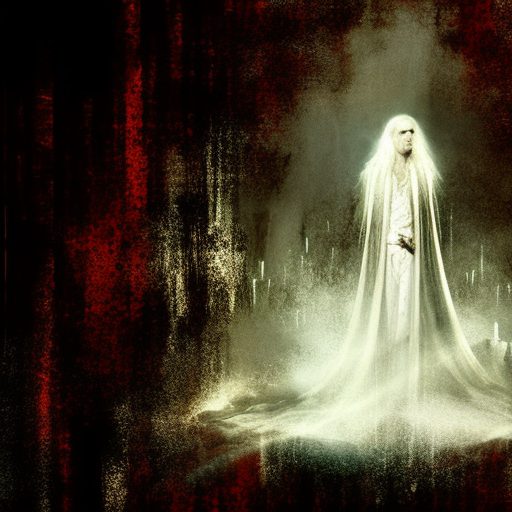The Vampire Lestat: A Tale of Immortality and Redemption
In “The Vampire Lestat,” Anne Rice takes us on a thrilling journey through the life and adventures of the charismatic vampire Lestat de Lioncourt. From his transformation into a creature of the night to his quest for meaning and redemption, this novel explores themes of immortality, love, and the struggle between good and evil.
The Awakening of a Vampire
The story begins in 18th-century France, where Lestat, a young and disillusioned aristocrat, becomes a vampire after encountering the enigmatic and ancient vampire, Magnus. As Lestat adjusts to his new existence, he grapples with the moral implications of his immortality and the insatiable thirst for blood that comes with it.
Driven by a desire for knowledge and understanding, Lestat embarks on a journey to discover the origins and secrets of his kind. He delves into the ancient texts of the Talamasca, a secret society of scholars, and uncovers the hidden history of vampires, challenging the conventional beliefs surrounding their nature and purpose.
Love, Loss, and the Pursuit of Redemption
Throughout his immortal life, Lestat experiences profound love and devastating loss. He forms a deep bond with Nicolas, his childhood friend turned companion, and later falls in love with the ethereal and fragile Louis de Pointe du Lac. Their complex relationship becomes a central theme in the novel, as Lestat grapples with his own desires and the consequences of his actions.
As Lestat’s fame as a vampire spreads, he becomes a rock star, using his newfound celebrity status to draw attention to the existence of vampires. However, his actions also attract the attention of the ancient and powerful vampire, Akasha, who sees Lestat as a potential ally in her quest for dominance over the vampire world.
Haunted by guilt and a desire for redemption, Lestat seeks to reconcile his immortal nature with his humanity. He questions the nature of evil and the possibility of finding goodness within himself, ultimately leading him on a path of self-discovery and transformation.
A Battle for the Soul of the Vampire World
As Lestat delves deeper into the secrets of his kind, he becomes entangled in a battle for the soul of the vampire world. Akasha, the Queen of the Damned, seeks to eliminate all male vampires and establish a matriarchal order. Lestat, along with his allies, must confront Akasha and her powerful consort, Enkil, in a climactic showdown.
In the midst of this epic battle, Lestat confronts his own inner demons and embraces his role as a leader. He realizes that his immortality grants him the power to shape the destiny of his kind and to redefine what it means to be a vampire.
Throughout “The Vampire Lestat,” Anne Rice weaves a rich tapestry of mythology, history, and philosophy. Her vivid descriptions and compelling characters immerse the reader in a world where immortality is both a blessing and a curse. The novel explores themes of identity, morality, and the eternal struggle between light and darkness.
Key Takeaways:
- Lestat’s journey from disillusioned aristocrat to powerful vampire rock star is a captivating exploration of the human desire for meaning and purpose.
- The novel challenges traditional vampire lore, presenting vampires as complex beings capable of both great evil and profound goodness.
- Love, loss, and redemption are recurring themes, as Lestat grapples with his own desires and the consequences of his actions.
- The battle between Lestat and Akasha highlights the eternal struggle between light and darkness, good and evil.
“The world changes, we do not, therein lies the irony that kills us.”
In conclusion, “The Vampire Lestat” is a mesmerizing tale that delves into the complexities of immortality, love, and the eternal struggle between good and evil. Anne Rice’s vivid storytelling and thought-provoking themes make this novel a must-read for fans of vampire fiction and those seeking a deeper exploration of the human condition.












